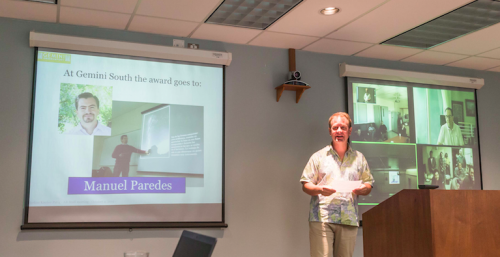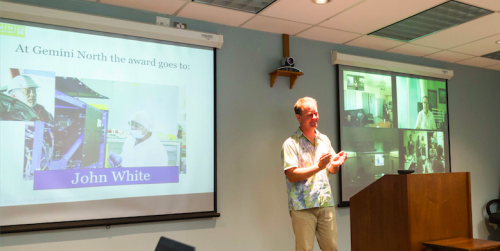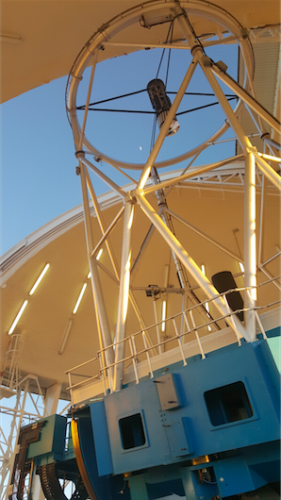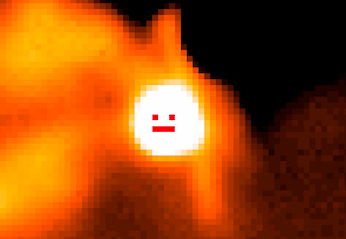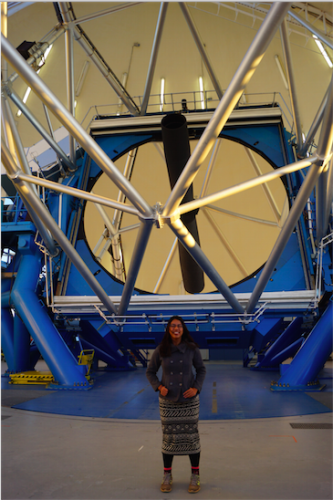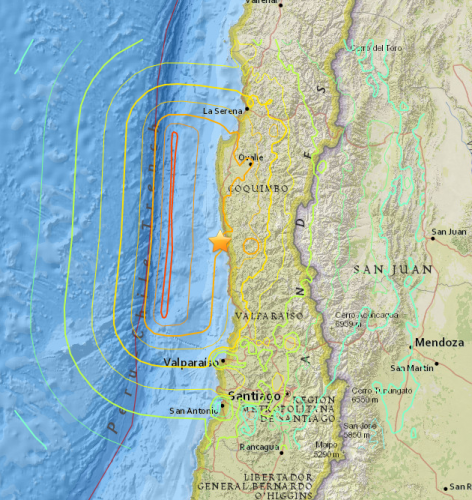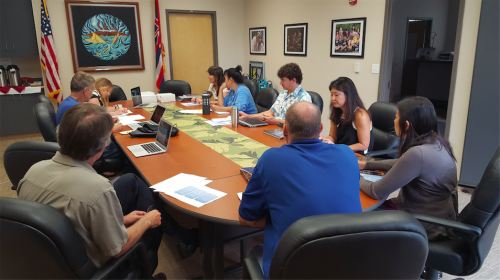- Date: 14 Oct 2015
- Comments: (0)
- Categories: For Everyone
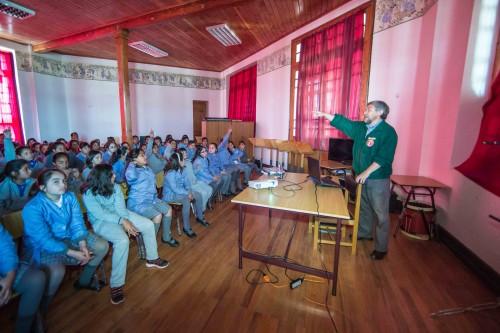
Erich Wenderoth, Especialista de Operaciones Científicas, interactúa con estudiantes de La Serena, durante el último Viaje al Universo.
For english press here.
Alumnos y profesores de La Serena están a punto de partir en un Viaje al Universo único. Muy pronto, el programa anual del Observatorio Gemini, que potencia el aprender pensando y haciendo, despegará con más fuerza que nunca. Este programa lleva a profesionales de la ciencia y tecnología de Gemini y de otros observatorios a las salas de clases para compartir su trabajo con la próxima generación de exploradores. Además, se incluyen programas de Planetario Móvil que acercarán el Cosmos hasta la Tierra con un universo repleto de demostraciones entretenidas e innovadoras.
Una novedad para este año es la visita del grupo de reconocidos científicos y comediantes españoles Big Van “Científicos sobre Ruedas.” Los Big Van son “extrovertidos científicos”, señala la Sub Directora de Gemini, Nancy Levenson. En realidad, ellos son astrofísicos (y un biólogo) quienes luego de ganar el concurso de Monólogos Científicos de Europa, se abocaron de lleno a compartir su conocimiento y su entusiasmo por el mundo. Ellos atraen de manera inesperadamente divertida, recurso que denominan “intervenciones”. Estos consisten en rutinas de stand up comedy educacionales a través de las cuales explican conceptos científicos usando siempre la justa cuota de humor. Puedes averiguar más sobre ellos en este sitio http://www.thebigvantheory.com
El programa de Viaje al Universo este año trabajará con profesores, alumnos y apoderados de los colegios: Trinity School, San Nicolás y St. Mary’s School del sector El Milagro; Colegio San Joaquín, además de los establecimientos Carlos Condell de la Haza y Martín de Porres en Las Compañías. Cada uno de estos colegios recibirá la visita de astrónomos y científicos en general, quienes llevarán presentaciones especialmente preparadas para el grupo y edad de los cursos, además del Planetario Móvil, módulos para la familia y una presentación masiva de The Big Van.
Aunque Viaje al Universo se centra prioritariamente en las escuelas, The Big Van hará presentaciones públicas para un número limitado de interesados. Una de ella se hará en Lighthouse CoffeeShop de La Serena, donde presentan su “Café conCiencia,” programado para el martes 20 de octubre a partir de las 18:30 horas. (Obtenga sus tickets directamente en Matta 570, La Serena). La otra presentación se realizará en el colegio St. Mary’s School – El Milagro el día jueves 22 de octubre a partir de las 18:30. El espacio aunque gratuito, también reducido, por lo que invitamos a reservar directamente llamando al colegio en el número 51- 2293143 lo antes posible.
Para detalles del programa Viaje al Universo visítenos en: www.gemini.edu/viaje
Contacto:
Ma. Antonieta García Ureta
Gemini
Oficina: 51-2205628
Cel: 9- 69198294
e-mail: agarcia@gemini.edu

